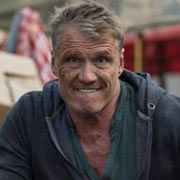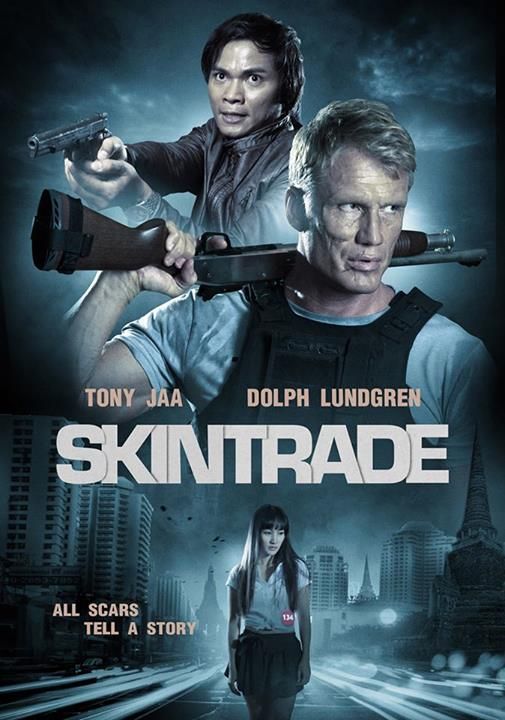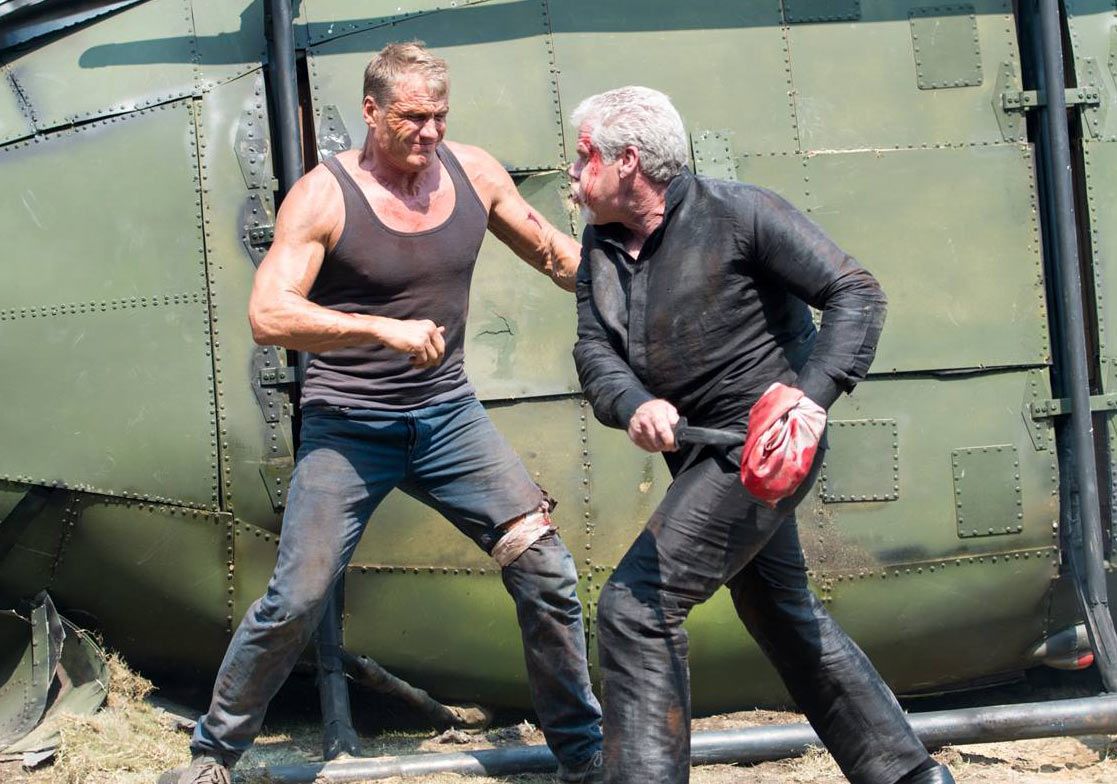It may be a scientific fact that Dolph Lundgren's heart pumps adrenaline rather than blood.
The action star made his Hollywood debut in 1985's James Bond flick "A View To A Kill," followed it up opposite Sylvester Stallone in "Rocky IV," and hasn't slowed down since. His resume includes 64 movie and television roles, not to mention his work directing, producing and writing.
His latest endeavor is "Skin Trade," arriving in select theaters today. Lundgren plays Nick Cassidy, a New Jersey detective who busts Serbian mobster Viktor Dragovic (Ron Perlman) for his human trafficking operation, shooting the villain's son and killing him during the raid. In retaliation, Dragovic's other two children kill Cassidy's wife and daughter. Released on bail, Dragovic flees the country to Cambodia, with Cassidy in hot pursuit and out for payback.
Lundgren spoke with SPINOFF about writing a story based on the heavy topic of human trafficking, the art of crafting action sequences and why the one he has in the film with Tony Jaa is one of "the most physically taxing fights" he's ever filmed.
Spinoff Online: In addition to starring in it, you penned the screenplay for "Skin Trade." What hit you so strongly about human trafficking that you chose to write about it?
Dolph Lundgren: When I first read about it, it was almost 10 years ago. I read a story about a van full of girls that were supposed to be trafficked from Mexico to the United States. That's where I got the idea for the scene in the container. I thought it was something that hadn't been brought up a lot in movies. It's a huge crime. I didn't know much about it when I first started. It was just a hunch. Then I realized it was a huge criminal enterprise that makes almost a $100 billion a year. I thought it could make an exciting story, but also make people think a little bit about what's going on out there.
The topic is serious, but the movie has all the action/cop trappings your fans love. How tricky was it to marry those two elements?
It was very tough. I don't know how good of a job we did. You could go more real and have less entertaining action, [and] perhaps you would get less of an audience. There's also a financial aspect to it. Obviously, whoever puts up the money wants the film to sell. It wasn't easy. Whether you had more action or less, I think people are still going to walk away illuminated about the issue. That was my main goal, and that's what is going to stay with me after the movie is gone, is the cause. I'm sure I'll be supporting it five or ten years from now as well.
There's plenty of elaborate action in "Skin Trade." At this point, what makes a good fight sequence for you?
It's tough, because I've done so many. I've fought Stallone and Van Damme and Tony Jaa, now. It's a combination of the technical aspect and emotional aspect and the setting. If you can find an interesting setting, that can make for an interesting fight. At this point, it's more the story, like trying to tell the story within the fight, so it doesn't become just a fight. In "Skin Trade," there is an emotional aspect and that makes a difference. It's a combination of factors that make it work.
You and Tony Jaa don't hold back. How brutal was it to film that scene?
It was really tough. We shot that in a rice factory in the middle of the night for about five nights. You get tired, and it was hot. It's also tough because his style is different than mine, and we tried to marry the two to make it feel real in some respect. That fight took a lot out of me. It was one of the toughest I've done. Certainly, "Rocky IV," "Universal Soldier" and this one were the most physically taxing fights I've done.
What did shooting in Bangkok add to the movie, and what were some of the challenges you faced abroad?
Bangkok adds a lot of color. Most people haven't been, but know about it. We were there at a really tough time. They have this Shutdown Bangkok, like some kind of political activism that went on. After a while, their military posted a curfew. It made it really hard for us to move. Fortunately, we had partnered with people very well connected in the government. If we hadn't, we wouldn't have finished the film. Basically, I have good memories of Bangkok. It's a fascinating place. It stays with you. The Oriental philosophy and the way of life are different, but it's very mellow and relaxing.
The movie ends with a bit of a twist. Did you always imagine "Skin Trade" as a possible franchise?
Not really, no. Originally, the daughter doesn't live. Then I started thinking that she should, which you find out at the end. You find out she's alive, but there's a bittersweet ending. I didn't consider it as a franchise, but when I was over there, I started thinking, "How would I do this different? How would I stay close to the subject matter?" Organ trafficking is quite big, as well, so I thought that could be interesting. We could follow up with some kind of other trade.
You made your movie debut in 1985's "A View To A Kill." How has the action film evolved since then?
They've evolved technically. Mythologically, it's the same thing. It's the journey of the hero. It goes all the way back to the Greek myths. It's the story that has been told since the beginning of time. It's been told in various ways before there were movies. There was "The Iliad," "Odyssey" and all the Viking tales. "The Three Musketeers."
Since I started, the big change is you don't have to do as much physically, yourself, because you can use CGI, you can use doubles. One of the best ways to become an action hero today is win an Academy Award. Then people will put enough money behind you to make you look really good and very capable. Stallone said once, when Michael Keaton wore the Bat[man] suit in 1989, the muscles were put on. People believed he had the muscles, somehow. That changed a lot.
What has surprised you about your career that has spanned over three decades?
What has surprised me is, I've managed to get this far with having no formal training. Everything I've done, such as engineering and martial arts, I had a lot of formal training from the beginning, and went up the ranks in school and with the belts. With film, I was kind of thrown into it. I had to pick up the chops as I went along. I guess it proves [that] a lot of it comes down to your drive and how much work you can do. There are a lot of talented actors out there, so, it surprises me that I'm still around and the future feels fairly bright. The things ahead of me are more exciting than the things I've done. That's how I look at it now.



